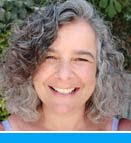A couple of weeks ago both my boys were on their tiyul shnati (annual trip) with their school at the same time. On a whim I arranged an overnight trip for Mister Handmade in Israel and I to Be'ersheva, the largest city in southern Israel, often referred to as the "Capital of the Negev". I wasn't particularly looking to visit Be'ersheva, but decided to go there when I found a delightful place to stay - Home in the Old City. Our 24 hour visit was based around that.
The guesthouse I found was absolutely beautiful, built into restored stone houses that were once part of the staff homes of Hadassah Hospital, and situated right in the heart of Be'ersheva's Old City. Behind the main entrance door we stepped into a pretty shared patio to which the rooms' doors are facing. Our room was ecologically built, with high ceilings and stone arches, and beautiful details in the painted tiles. Breakfast, served outside on the patio, was simple but delicious. It was a real gem of a place to stay!
Be'ersheva's Old City is beginning to enjoy a big boost of development and restoration and is on its way to becoming the jewel of the desert as it was in Abraham’s day (Be'ersheva was the first city in Israel that our forefathers, Abraham, Isaac and Jacob, settled in). We decided to explore the area by foot and, equipped with a map from our room, we walked from one beautiful building to the next.
Our first stop was at the "Saraya" building, below, a historic building built in 1906 that was used in the past as home to the Turkish governor, during the Ottoman reign in Israel. During the British Mandate the building was used as home to the appointed district officer, and later as a girls' school. These days it has been transformed in to The Negev Museum of Art, with three galleries displaying temporary exhibitions and a vast entrance yard.
Next door to the museum, and within the same compound, is the Museum of Islamic and Near Eastern Studies, above. This museum, opened in 2014, is located in "el Gahma", the Big Mosque. The mosque, which was built diagonally to the street, in keeping with the direction of prayer to Mecca, has a towering minaret, white dome and intricate metal detailing on its many windows. Inside it now houses a collection of Muslim archaeological finds from Israel. The temporary exhibition we viewed, From Iznik to Jerusalem, presented the encounter between the Turkish ceramics and the Armenian ceramics of Jerusalem.
In Israel you will not see much figurative art in public places. "You shall not make for yourself a graven image" it says in the Bible, and fundamentalist Islam also forbids the depiction of human or animal form. This verse has been interpreted by some rabbis as a ban on statues, and municipal by-laws, particularly in Jerusalem, have always taken religious sensitivities into consideration. The monument to General Edmund Allenby, sitting on a block of stone in the middle of a small park opposite the museum compound, seems to conform with that idea.
Allenby was the British conqueror who marched into Palestine and put an end to four centuries of Turkish rule with a surprise attack on Be'ersheva. One might have anticipated some majestic statue of the man on a galloping steed. The park named after him, called Gan Allenby, was one of the first public parks in Palestine. The Turks planted it in 1906 and held public assemblies and ceremonies there. But park culture was not yet ingrained. Bedouin brought their flocks to graze and the trees were cut down for firewood. In 1915, the park was restored as a formal Islamic garden with four paths leading to a central column celebrating the victories of the Ottoman Empire. After the British conquest, a bust of General Allenby was mounted on this column, but the Arabs later tore it down. It has only recently been replaced with a modest bust and the simple inscription "Allenby, 1917-18".
In Israel you will not see much figurative art in public places. "You shall not make for yourself a graven image" it says in the Bible, and fundamentalist Islam also forbids the depiction of human or animal form. This verse has been interpreted by some rabbis as a ban on statues, and municipal by-laws, particularly in Jerusalem, have always taken religious sensitivities into consideration. The monument to General Edmund Allenby, sitting on a block of stone in the middle of a small park opposite the museum compound, seems to conform with that idea.
Allenby was the British conqueror who marched into Palestine and put an end to four centuries of Turkish rule with a surprise attack on Be'ersheva. One might have anticipated some majestic statue of the man on a galloping steed. The park named after him, called Gan Allenby, was one of the first public parks in Palestine. The Turks planted it in 1906 and held public assemblies and ceremonies there. But park culture was not yet ingrained. Bedouin brought their flocks to graze and the trees were cut down for firewood. In 1915, the park was restored as a formal Islamic garden with four paths leading to a central column celebrating the victories of the Ottoman Empire. After the British conquest, a bust of General Allenby was mounted on this column, but the Arabs later tore it down. It has only recently been replaced with a modest bust and the simple inscription "Allenby, 1917-18".
Moving on, we passed the beautifully kept Be'ersheva War Cemetery, the final resting place of 1,239 British and Australian soldiers who died in the area during World War I. Nearby is The Train Yard - Engine 70414 Compound, the old Turkish Railway Station that was built in 1915 by the Ottomans. It has recently been preserved and restored, and in the complex is a small museum, a restaurant, and an original locomotive steam engine and train carriages, below. Be'ersheva was the only city built in what is now Israel during the 400 years of Ottoman rule. The train station was built to meet the Ottoman army's need for a main supply line running from Syria to the fighting front in Sinai, and remained in use until 1927. The line began in Damascus, Syria and ran to Al-Madina in Hejaz (today a part of Saudi Arabia). It was along this line that Lawrence of Arabia harassed Turkish trains and the soldiers guarding the line during World War I.
The water tower of the Turkish train station, now in the middle of a residential area, above, used to supply water to the steam engine of the trains which arrived at the nearby station. On the roof were two big water tanks and on the first floor was the pump. The water tower was a central building that served the Turks, the English, and the Jews. After the closure of the station, and during the Jewish settlement of the city, the tower was used to supply water to the residents of the city.
One final place we visited that I want to tell you about in this post (yes - there will be more!) is Abraham's Well International Visitors' Centre, located down by the banks of the biblical Be'ersheva River. This new Visitor Centre showcases the life of the Patriarch Abraham, the spiritual father of three monotheistic religions, and the well which, according to the local Bedouin, and based on the dating of stones and location, may be the one mentioned in the Bible.
It may have been here that Abraham watered his large flocks almost 4,000 years ago and settled a dispute with Abimelech over rights to the water. Scholars still cannot decide whether "Beer-Sheva" means "Well of the Covenant" or "Well of the Seven" for the seven ewe lambs that Abraham gave Abimelech as a peace offering.
The water tower of the Turkish train station, now in the middle of a residential area, above, used to supply water to the steam engine of the trains which arrived at the nearby station. On the roof were two big water tanks and on the first floor was the pump. The water tower was a central building that served the Turks, the English, and the Jews. After the closure of the station, and during the Jewish settlement of the city, the tower was used to supply water to the residents of the city.
One final place we visited that I want to tell you about in this post (yes - there will be more!) is Abraham's Well International Visitors' Centre, located down by the banks of the biblical Be'ersheva River. This new Visitor Centre showcases the life of the Patriarch Abraham, the spiritual father of three monotheistic religions, and the well which, according to the local Bedouin, and based on the dating of stones and location, may be the one mentioned in the Bible.
It may have been here that Abraham watered his large flocks almost 4,000 years ago and settled a dispute with Abimelech over rights to the water. Scholars still cannot decide whether "Beer-Sheva" means "Well of the Covenant" or "Well of the Seven" for the seven ewe lambs that Abraham gave Abimelech as a peace offering.
The well may or may not be the one mentioned in the Bible, but the centre was definitely worth the visit. The architecture of the Visitor Centre was impressive and the 3D film informative, giving us a good understanding of Abraham's life and an explanation about why he chose Be'ersheva as the place to build his well. The well is... well, it's a well. If you are in Be'ersheva, take some time to visit it.


















































5 comments:
Sounds like a brief but thoroughly enjoyed getaway. That looks like a lovely guesthouse - I clicked through to the website and looked at every photograph!
Of course I perused each of your images as well, and I am struck by how orderly and clean all the urban scenes appear. Is this the norm? I can only imagine what it would be like to live in a place where such care is ingrained in the culture.
This looks like such a great trip! I would love to visit that old train station museum. It is awesome when things like that are preserved for teaching. The hotel looks adorable!
looks like a really neat place. the cemetery is sobering.
Sounds like a perfect mini break - that food looks amazing.
Lovely place you found to stay and an interesting post on a place about which I know nothing other than it's appealing name. :)
Post a Comment